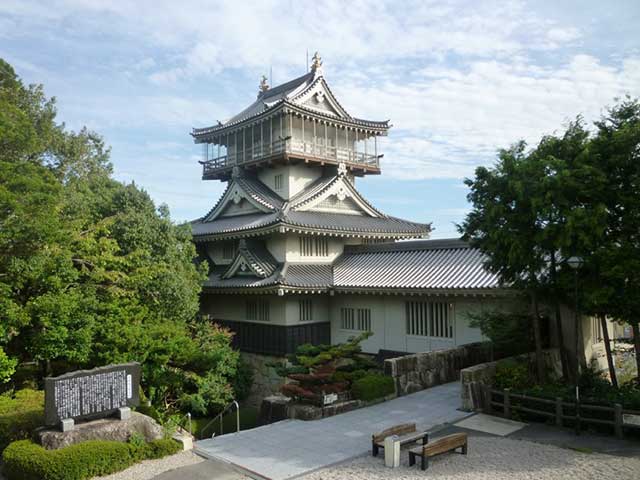
Iwasaki Castle, often overlooked in history books and tourist guides, is located in modern-day Nisshin City, approximately 15 kilometers southeast of Nagoya City. Positioned on a hill, it offers clear views of the surrounding plain.
The castle is believed to have been built by Oda Nobuhide, father of Oda Nobunaga, in the early 16th century to protect his eastern borders and support his base at nearby Shobata Castle. In 1529, Matsudaira Kiyoyasu, Tokugawa Ieyasu’s grandfather, seized the castle by force. Six years later, Kiyoyasu was killed by one of his retainers during a misunderstanding, and his son, Matsudaira Hidetada (Ieyasu’s father), entrusted the castle to Niwa Ujikiyo.
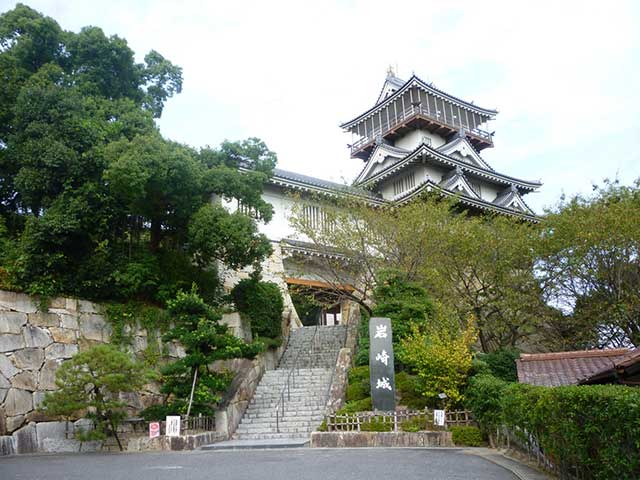
Iwasaki Castle played a significant role in the Battle of Komaki and Nagakute in 1584. Ikeda Tsuneoki led the Toyotomi Hideyoshi forces against the Tokugawa-held castle. The Toyotomi strategy aimed to bypass Tokugawa lines and attack Ieyasu’s stronghold at Okazaki, making quick strikes on small castles along the way to confine them. However, at Iwasaki Castle, Ikeda’s forces were fired upon, and Tsuneoki himself was shot, falling from his horse. Enraged and humiliated, he commanded a full-scale assault. Despite a strong defense, the castle fell with heavy casualties, including over 300 dead. This delay allowed Ieyasu’s forces to catch up and defeat the Toyotomi at the Battle of Nagakute.
The Niwa clan held the castle for nearly 60 years until the Battle of Sekigahara in 1600, after which they were awarded a castle in present-day Toyota City, leading to Iwasaki’s abandonment. Reconstructed in concrete in 1987, the castle is now surrounded by two hectares of preserved parkland. Despite its visual appeal, the reconstruction is not historically accurate. An excavation revealed the remains of a well and a lookout tower. The structure below the keep now houses a museum dedicated to the history of the castle, the battle, and the Niwa clan.
See also
-
Kokura Castle
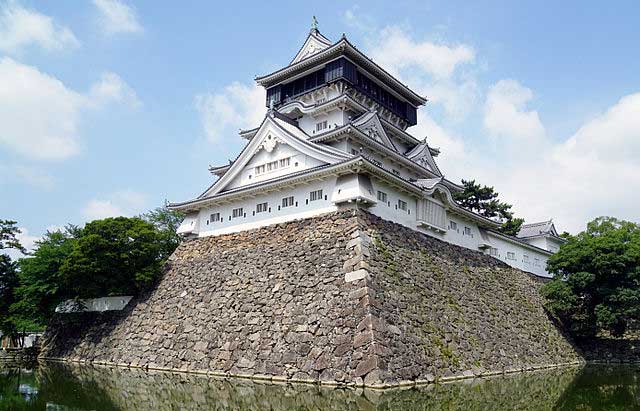
Kokura Castle is traditionally considered to have been founded by Hosokawa Tadaoki (1563–1645), although by the time the Hosokawa clan came to control these lands, the fortification had already existed since at least 1569 and was most likely built by members of the Mori clan.
-
Ikeda Castle
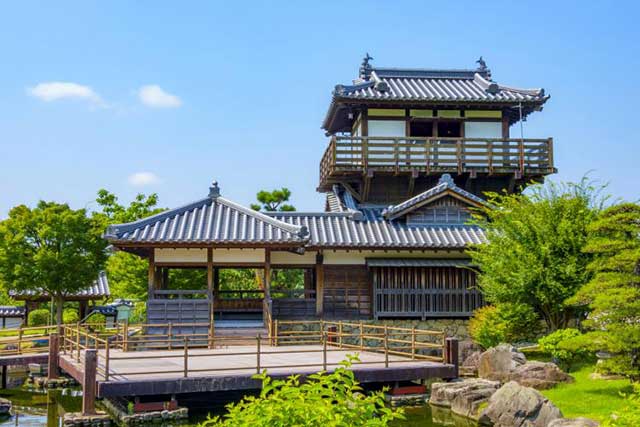
In 1334, Ikeda Noriyoshi built a small fort on this site, which over time was repeatedly expanded and rebuilt. During the Ōnin War of 1467–1477, the Ikeda clan supported the Western Coalition. As a result, Ikeda Castle was attacked and captured by the forces of the Eastern Coalition, but it was soon recaptured, allowing it to avoid serious destruction.
-
Aizu-Wakamatsu Castle
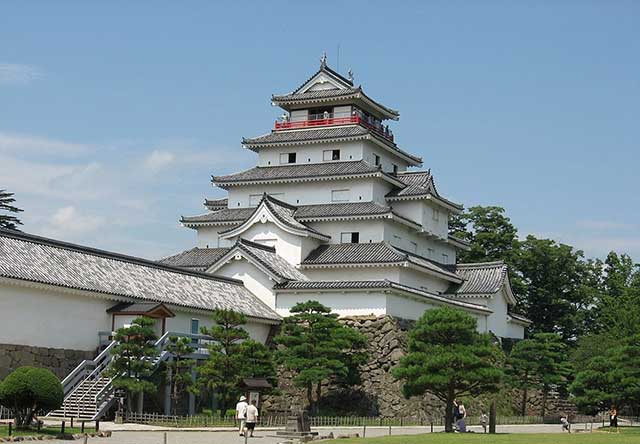
Aizu-Wakamatsu is the most powerful and at the same time the oldest castle in the Tōhoku region in the north of Honshu Island. Its history begins in the 14th century and is closely connected with the Ashina clan, whose members claimed descent from the legendary Taira family.
-
Maruoka Castle
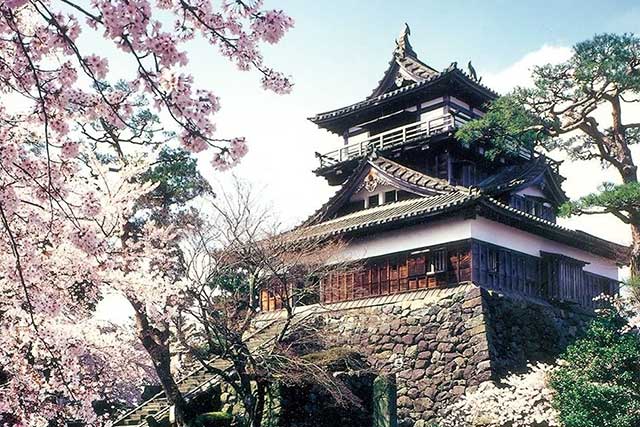
Maruoka Castle is located in the central part of the former city of Maruoka, which is now part of the city of Sakai. This area lies in the northeastern part of Fukui Prefecture. The castle was built on the bank of the Kuzuryu River, on the side opposite Fukui City, which once served as the administrative center of the former Echizen Province. Thanks to its location, Maruoka held significant strategic importance, as it controlled two major routes at once: the Hokurikudo highway leading from Kaga Province and the Mino Kaido road connecting these lands with Mino Province.
-
Marugame Castle
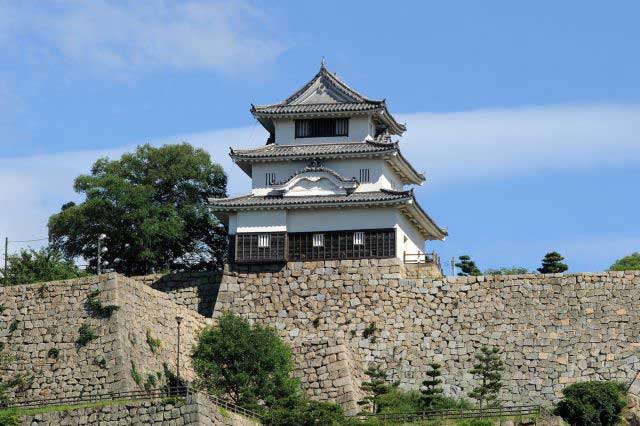
Marugame is part of the so-called “Authentic Dozen,” a group of twelve castles whose donjons have survived to the present day without major reconstructions since the Edo period.
-
Iyo Matsuyama Castle
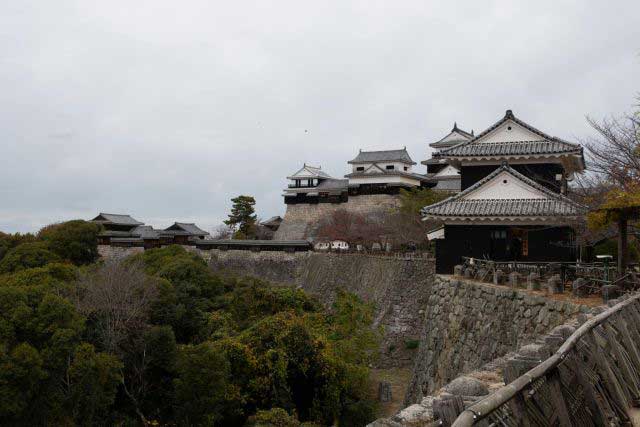
Historically, the center of Iyo Province—corresponding to today’s Ehime Prefecture on the island of Shikoku—was the city of Imabari, while the Matsuyama area was regarded as an agricultural hinterland with broad plains and low hills. During the Muromachi period, the central part of the province was governed by the Kano clan from Yuzuki Castle. With the onset of the Sengoku period, however, this clan lost its former influence and was forced to survive in the shadow of the more powerful Mori and Chōsokabe clans. After Toyotomi Hideyoshi’s forces conquered Shikoku in 1587, the northern part of Iyo Province was granted to Fukushima Masanori, one of the so-called “Seven Spears of Shizugatake.” In 1595, Masanori was transferred to Kiyosu Castle, and the lands around Matsuyama were given to another of the Seven Spears, Katō Yoshiaki, who received Masaki Castle and an income of 60,000 koku of rice.
-
Kanazawa Castle

Construction of Kanazawa Castle began in 1580 on the orders of Sakuma Morimasa, a vassal of Oda Nobunaga. The castle was built on the site of the Ikko-ikki sect's Oyama Gobo temple, which is why it is sometimes called Oyama Castle. Morimasa managed to build several moats and begin construction of a castle town. However, after his defeat at the Battle of Shizugatake in 1583, he was executed, and ownership of the castle passed to Maeda Toshiie (1538–1599).
-
Nakatsu Castle
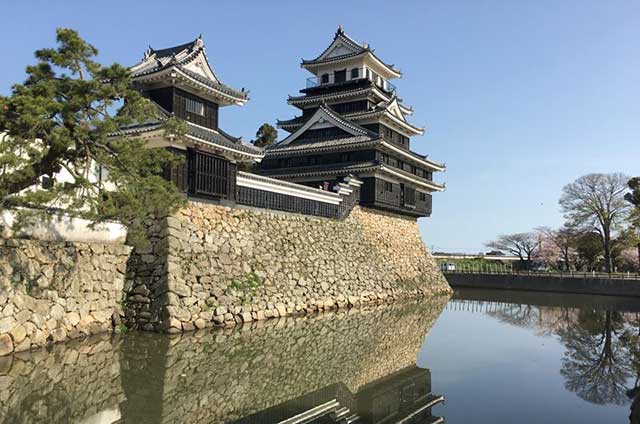
Kuroda Yoshitaka (1546–1604) was one of the closest advisors to the legendary military commander Toyotomi Hideyoshi. He took part in key military campaigns of the late 16th century, including the campaign against Shikoku in 1585 and the campaign against Kyushu in 1587. Later, during the second campaign in Korea, Yoshitaka served as chief advisor to the commander of the invasion forces, Kobayakawa Hideaki. After Hideyoshi's death, he swore allegiance to Tokugawa Ieyasu, thereby securing his influence and patronage under Japan's new leader.

